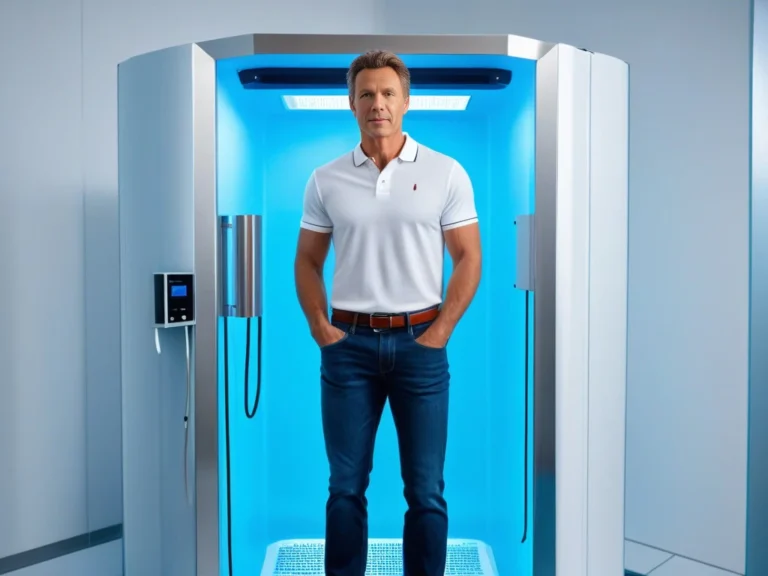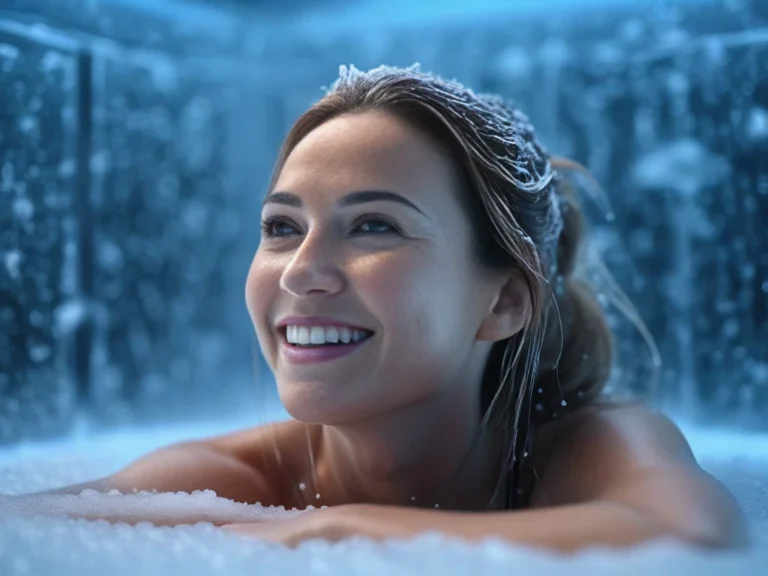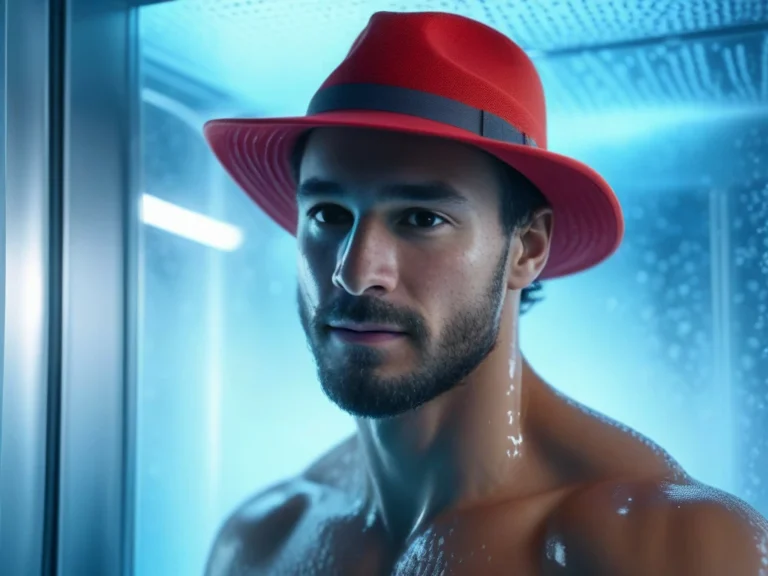Can Localised Cryotherapy Enhance Your Beauty Routine?

Localised Cryotherapy has gained popularity in recent years due to its numerous benefits for beauty and overall wellness. This therapy can provide targeted relief and rejuvenation, making it a highly effective treatment option.
So, can localised cryotherapy enhance your beauty routine?
SUMMARY
- Localised Cryotherapy is a beauty treatment that offers numerous benefits for the skin, hair, and body.
- The science behind Localised Cryotherapy involves the use of extremely cold temperatures to stimulate the body’s natural healing processes.
- Localised Cryotherapy can help with skin rejuvenation, anti-ageing, reducing puffiness and dark circles around the eyes, treating acne and other skin conditions, enhancing hair growth and scalp health, pain relief, and relaxation.
- When undergoing Localised Cryotherapy, always follow safety precautions and considerations to ensure a safe and effective treatment.
Understanding the Science behind Localised Cryotherapy
Localised Cryotherapy works by exposing the skin to extremely cold temperatures, typically ranging from -100°C to -160°C. This causes vasoconstriction, which is the narrowing of blood vessels in the treated area. As a result, there is a decrease in blood flow and inflammation, leading to reduced swelling and redness.
The effects of Localised Cryotherapy on the skin are multi-fold.
- Firstly, the cold temperatures stimulate collagen production. It is essential for maintaining skin elasticity and firmness.
- This can help reduce the appearance of fine lines and wrinkles, resulting in a more youthful complexion.
- Additionally, Localised Cryotherapy can improve blood circulation in the treated area, delivering oxygen and nutrients to the skin cells, and promoting cell regeneration and rejuvenation.
Did you know that athletes use localised cryotherapy too for treating injuries?
How Localised Cryotherapy Helps with Skin Rejuvenation and Anti-Ageing
Localised Cryotherapy can be highly beneficial for reducing the signs of ageing. The cold temperatures stimulate collagen production, which helps improve skin elasticity and firmness. This can lead to a reduction in the appearance of fine lines and wrinkles, giving the skin a more youthful and rejuvenated appearance.
Furthermore, Localised Cryotherapy can also help improve skin tone and texture. The cold temperatures promote cell regeneration and exfoliation, resulting in smoother and more even skin. This can help reduce the appearance of blemishes, scars, and hyperpigmentation, giving the skin a more radiant and flawless look.
Localised Cryotherapy for Reducing Puffiness and Dark Circles Around the Eyes
One of the most common concerns in the beauty industry is puffiness and dark circles around the eyes. Localised Cryotherapy can be highly effective in reducing these issues. The cold temperatures constrict blood vessels, reducing swelling and puffiness in the eye area. This can make the eyes appear more awake and refreshed.
Additionally, Localised Cryotherapy can also help reduce dark circles by improving blood circulation in the treated area. The increased blood flow delivers oxygen and nutrients to the skin cells, helping to lighten dark circles and promote a brighter complexion.
Localised Cryotherapy for Treating Acne and Other Skin Conditions
Localised Cryotherapy can be a game-changer for those struggling with acne and other skin conditions. The cold temperatures have anti-inflammatory properties, which can help reduce redness and swelling associated with acne breakouts. Additionally, Localised Cryotherapy can also help kill acne-causing bacteria, leading to a reduction in breakouts.
Furthermore, this therapy can also be beneficial for other skin conditions such as eczema, psoriasis, and rosacea. The cold temperatures can help soothe irritated skin, reduce inflammation, and promote healing. This can provide much-needed relief for those suffering from these conditions.
Localised Cryotherapy for Enhancing Hair Growth and Scalp Health
In addition to its benefits for the skin, Localised Cryotherapy can also be highly beneficial for hair growth and scalp health. The cold temperatures stimulate blood circulation in the scalp, delivering oxygen and nutrients to the hair follicles. This can help promote hair growth and improve the overall health of the scalp.
Furthermore, Localised Cryotherapy can also help reduce scalp inflammation and itchiness, which are common issues for those with scalp conditions such as dandruff or psoriasis. The cold temperatures can provide soothing relief and promote a healthier scalp environment.
Localised Cryotherapy for Pain Relief and Relaxation
Localised Cryotherapy is not only beneficial for beauty but also for pain relief and relaxation. The cold temperatures can help reduce inflammation and numb pain receptors, providing relief for sore muscles, joint pain, and other aches and pains.
Additionally, Localised Cryotherapy can also have a relaxing effect on the body and mind. The cold temperatures stimulate the release of endorphins, which are natural mood-boosting chemicals in the body. This can help reduce stress, and anxiety, and promote a sense of well-being.
How Localised Cryotherapy Can Complement Your Existing Beauty Routine
Localised Cryotherapy can be easily incorporated into your existing beauty routine. It can be used as a standalone treatment or combined with other beauty treatments for enhanced results. For example, it can be used before or after facial treatments to reduce inflammation and enhance the absorption of skincare products.
Furthermore, Localised Cryotherapy can also be used in conjunction with other non-invasive beauty treatments such as microdermabrasion or chemical peels. The cold temperatures can help soothe the skin and reduce redness and irritation associated with these treatments.
What to Expect from a Localised Cryotherapy Session
During a Localised Cryotherapy session, you will be exposed to extremely cold temperatures for a short time, typically ranging from 2 to 5 minutes. The therapist will use a handheld device to direct the cold air to the targeted area. You may feel a slight tingling or numbing sensation during the treatment, but it should not be painful.
After a Localised Cryotherapy session, you can expect to feel refreshed and rejuvenated. The cold temperatures stimulate blood circulation, leaving your skin looking and feeling revitalized. You may also notice a reduction in puffiness and dark circles around the eyes, as well as a decrease in inflammation and redness.
Safety Precautions and Considerations for Localised Cryotherapy in Beauty Treatments
While Localised Cryotherapy is generally considered safe, there are some safety precautions and considerations to keep in mind before undergoing this treatment. Firstly, it is important to consult with a qualified professional who has experience in administering Localised Cryotherapy. They will be able to assess your suitability for the treatment and provide guidance on the best approach for your specific needs.
It is also important to disclose any medical conditions or medications you are taking before undergoing Localised Cryotherapy. Certain conditions such as Raynaud’s disease or cold allergies may not be suitable for this treatment. Additionally, pregnant women and those with open wounds or infections should avoid Localised Cryotherapy.
In terms of potential risks and side effects, some individuals may experience temporary redness, numbness, or tingling in the treated area. These side effects are usually mild and subside shortly after the treatment. However, if you experience any severe or prolonged side effects, it is important to seek medical attention.
In conclusion, Localised Cryotherapy is a highly effective beauty treatment that offers numerous benefits for the skin, hair, and overall wellness. From reducing the signs of ageing to treating acne and promoting hair growth, this therapy can be a game-changer for those looking to enhance their beauty routine.
However, it is important to consult with a qualified professional and consider any safety precautions before undergoing Localised Cryotherapy. With proper guidance and care, this treatment can provide remarkable results and help you achieve your beauty goals.
FAQs
What is localised cryotherapy?
Localised cryotherapy is a treatment that involves the use of extremely cold temperatures to target specific areas of the body. It is a non-invasive procedure that can be used to reduce inflammation, improve circulation, and promote healing.
How does localised cryotherapy work?
Localised cryotherapy works by using a device that delivers a stream of cold air to the targeted area. The cold air causes the blood vessels in the area to constrict, which reduces inflammation and swelling. It also stimulates the production of collagen, which can improve the appearance of the skin.
Can localised cryotherapy enhance your beauty routine?
Yes, localised cryotherapy can enhance your beauty routine by improving the appearance of your skin. It can reduce the appearance of fine lines and wrinkles, improve skin tone and texture, and reduce puffiness and dark circles under the eyes.
What are the benefits of localised cryotherapy?
The benefits of localised cryotherapy include reducing inflammation and swelling, improving circulation, promoting healing, and improving the appearance of the skin. It can also be used to relieve pain and muscle soreness.
Is localised cryotherapy safe?
Yes, localised cryotherapy is generally considered safe when performed by a trained professional. However, it is not recommended for people with certain medical conditions, such as Raynaud’s disease or cold allergies.
How long does a localised cryotherapy session last?
A localised cryotherapy session typically lasts between 5 and 10 minutes, depending on the area being treated.
How often should you have localised cryotherapy?
The frequency of localised cryotherapy treatments depends on the individual and the condition being treated. Some people may benefit from daily treatments, while others may only need treatments once a week or less frequently.
Is There Any Scientific Research on Cryotherapy?
Yes, plenty. CLICK HERE for a vast list of scientific resources related to cryotherapy.






